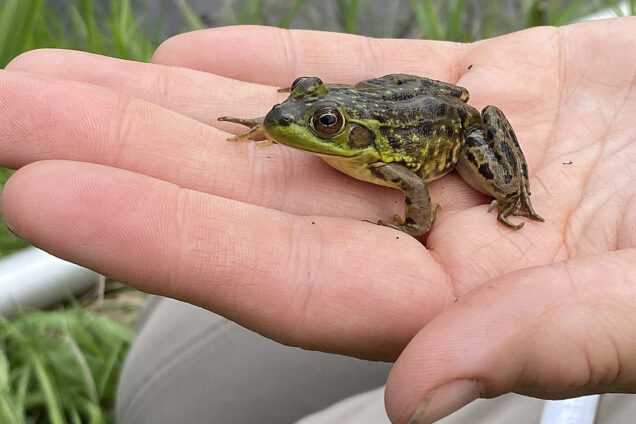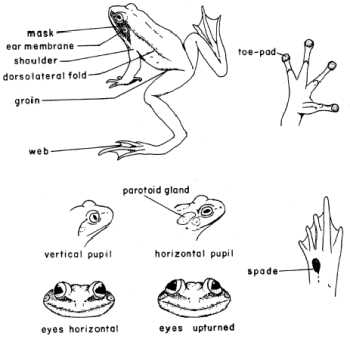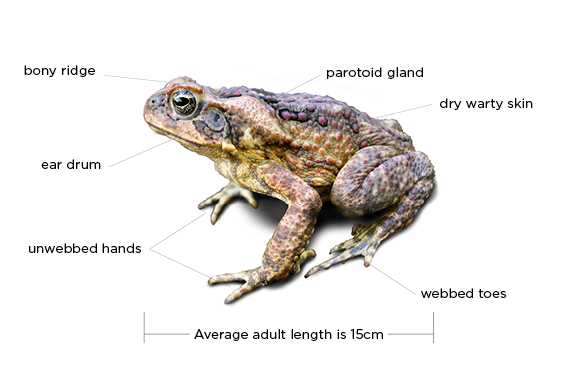Frogs are fascinating creatures that inhabit various parts of our planet, from lush rainforests to arid deserts. With their unique adaptations and diverse colors, frogs have evolved into a wide range of species. However, telling one species from another can be quite challenging for the untrained eye. If you have ever wondered how to identify a frog species, this guide is for you!
Another useful method to identify frogs is to listen to their calls. Frogs produce a wide variety of vocalizations, ranging from short croaks to melodious trills. Each species has a unique call that helps them attract mates and establish territories. By familiarizing yourself with the characteristic calls of different frog species, you can easily distinguish one species from another.
How to Identify and Recognize Different Frog Species
Identifying frogs can be a fascinating and rewarding experience. With thousands of frog species found worldwide, each with its unique characteristics, learning to recognize different species is a valuable skill for nature enthusiasts and researchers.
Here are some tips on how to identify and recognize different frog species:
- Size and Shape: Pay attention to the frog’s size and shape. Some frogs are small and slender, while others are larger and more robust.
- Coloration: Take note of the frog’s coloration. Frogs can come in a wide range of colors, including green, brown, yellow, and even vibrant reds and blues.
- Pattern and Markings: Look closely at the frog’s pattern and markings. Some frogs have distinct spots or stripes, while others have intricate patterns or unique arrangements of color.
- Eye Shape and Position: Observe the shape and position of the frog’s eyes. Some frogs have round eyes, while others have more elongated or horizontal-shaped eyes.
- Limb Structure: Examine the frog’s limb structure. Frogs can have different types of limbs, such as long and slender limbs for climbing or short and powerful limbs for jumping.
- Call and Vocalizations: Listen to the frog’s call and vocalizations. Each frog species has its unique call, which can help in identifying them.
- Habitat and Distribution: Consider the frog’s habitat and distribution. Frogs are adapted to different environments, and their geographical distribution can provide clues about their species.
- Behavior and Movement: Observe the frog’s behavior and movement patterns. Some frogs are nocturnal, while others are diurnal. Some frogs are excellent climbers, while others prefer to stay near the water.
- Expertise and References: Seek advice from experts or refer to field guides and scientific literature. Learning from experienced individuals or reliable sources can enhance your knowledge of frog species identification.
By combining these different factors and using field guides or online resources, you can become skilled in identifying and recognizing different frog species. Remember, practice and patience are crucial in developing this rewarding skill.
How to Identify Frogs: A Guide to Recognizing Different Species
Identifying frogs can be a fascinating and rewarding experience for nature enthusiasts. With their diverse range of physical characteristics and color patterns, frogs offer a unique challenge in species identification.
Here are some tips on how to identify frogs:
- Size: Pay attention to the size of the frog. Some species may be as small as an inch, while others can grow as large as 6 inches or more.
- Body Shape: Observe the body shape of the frog. Frogs can have slim, slender bodies or more robust and compact bodies.
- Skin Texture: Take note of the skin texture. Frogs can have smooth, warty, or bumpy skin.
- Eye Shape and Position: Look at the shape and position of the frog’s eyes. Some frogs have large, bulging eyes, while others have smaller, more streamlined eyes.
- Leg Size and Proportions: Examine the legs of the frog. Frogs with long, slender legs are usually good jumpers, while those with shorter, stouter legs may be better suited for climbing or swimming.
- Color Patterns and Markings: Note the color patterns and markings on the frog’s body. Some frogs have vibrant, contrasting colors, while others have more subdued or cryptic patterns.
- Distinctive Features: Look for any distinctive features that may help in identification. This could include webbed feet, spines, or unique body proportions.
- Call and Vocalizations: Listen for the frog’s call or vocalizations. Each species has its own unique mating call, which can be a helpful clue in identification.
- Habitat and Distribution: Consider the habitat and distribution of the frog. Different species of frogs have specific preferences for water sources, vegetation, and geographic regions.
By carefully observing these characteristics, you can begin to identify different species of frogs. Remember to consult field guides or online resources for further information and to enhance your knowledge of frog identification.
Color Patterns and Markings
Common color patterns seen in frogs include spots, stripes, and blotches. These patterns can be found on the frog’s back, legs, and even the underside of their bodies. Some frogs also have distinct markings, such as eye spots or bars, which can further aid in identification.
To further assist in identifying frogs based on their color patterns and markings, it is helpful to have a reference guide or field manual that includes detailed descriptions and illustrations of different species. These resources can provide valuable information about the specific colors and patterns to look for when trying to identify a frog.
Why are color patterns and markings important?
The color patterns and markings found on frogs play a significant role in their survival and adaptation to their environment. These visual characteristics can serve several purposes:
- Camouflage: Some frogs have color patterns that help them blend in with their surroundings, making them less visible to predators.
- Warning signals: Certain color patterns and markings indicate that a frog is toxic or venomous, serving as a warning to potential predators to stay away.
- Species recognition: The unique color patterns and markings of different frog species help individuals of the same species identify and recognize each other during breeding seasons.
- Mimicry: Some frog species have evolved to mimic the color patterns and markings of toxic or venomous species, offering them protection from predators.
Overall, the color patterns and markings found on frogs are not only fascinating to observe but also provide valuable insights into the intricate world of frog species identification and adaptation.
How to Identify a Frog: Recognizing its Distinctive Features

Physical Characteristics
Frogs have a variety of physical characteristics that can help you differentiate between species. One key feature is their skin, which can be smooth or covered in bumps, ridges, or warts. Some frogs even have colorful skin, while others may have camouflage patterns.
Another important physical characteristic is the shape and size of the body. Frogs can range from small and slim to large and plump. They can also have different limb lengths and shapes, depending on their habitat and habits. For example, arboreal frogs have long, slender limbs, while frogs that live in water have webbed feet for swimming.
Color Patterns and Markings
The color patterns and markings on a frog’s body are unique to each species. These patterns can vary greatly, from solid colors to intricate designs. The coloration of frogs often serves as a form of camouflage, allowing them to blend into their surroundings and avoid predators.
Distinctive Features

In addition to color patterns, frogs may have distinctive features that help with identification. This can include features such as crests, spines, or dermal fringes. For example, some species have a crest on their head or back, while others have spines on their legs.
Facial features can also be unique to certain species. For example, some frogs have large, bulging eyes, while others have a distinct shape or coloration of the nose or mouth. These features can be helpful in narrowing down the identification of a particular species.
Frog Calls and Vocalizations
One of the most definitive ways to identify a frog species is by their calls and vocalizations. Each frog species has a unique call, which they use for communication and attracting mates. These calls can vary in pitch, duration, and rhythm.
By listening to the calls of different frogs, you can learn to recognize and distinguish between species. Some frogs have loud and distinctive calls, while others may produce softer or more melodic sounds. Paying attention to the sound patterns and frequencies can help you identify the specific species of frog.
Identifying Frogs: A Guide to Recognizing Different Species
When trying to identify a frog, take note of its coloration. Some frogs may be brightly colored, while others may have more muted tones. Pay attention to the markings on the frog’s body, such as spots, stripes, or patterns. These can greatly vary between different species.
Another important aspect to consider is the frog’s size and shape. Some frogs are small and slender, while others are larger and more robust. The body shape can provide clues about the frog’s habitat and lifestyle. For example, frogs with long limbs are often excellent jumpers and may be found near water bodies.
Frog calls and vocalizations are also useful for identification purposes. Each frog species has its own unique call, which helps them attract mates and defend their territory. By learning to recognize these calls, you can narrow down the potential species that may be present in a particular area.
Finally, observing the behavior and movement of frogs can also aid in their identification. Some frogs may have distinctive behaviors, such as climbing trees or burrowing in the ground. Others may have unique movements, such as hopping or swimming. By closely observing these behaviors, you can gather additional information to help identify the frog.
In summary, to identify a frog species, it is necessary to pay attention to its appearance, color patterns, markings, size, and shape. Additionally, familiarizing yourself with the frog’s calls, habitat, distribution, behavior, and movement can greatly assist in the identification process.
Habitats and Distribution
Frogs are highly adaptable creatures and can be found in a wide range of habitats around the world. They are found on every continent except Antarctica and can be found in diverse environments such as forests, grasslands, marshes, and even deserts. The most diverse frog habitats are found in tropical rainforests, where they thrive in the humid and warm conditions.
The distribution of frog species is influenced by various factors, including climate, geography, and the availability of suitable habitats. Different species of frogs have different habitat requirements, and some are more specialized in their habitat preferences than others. Some frogs are mostly aquatic, living in or near bodies of water such as ponds, lakes, and streams. Others are more terrestrial and can be found in terrestrial habitats, including forests and grasslands.
Frogs play an important role in their ecosystems. They are excellent indicators of environmental health, and their presence or absence can provide valuable information about the overall condition of an ecosystem. As amphibians, frogs are highly sensitive to changes in their environment, including water pollution, habitat loss, and climate change. Their decline or disappearance from an area can indicate problems in the ecosystem that need to be addressed.
Frog Behavior and Movement

Another interesting behavior of frogs is their ability to camouflage. Many frog species have color patterns and markings that help them blend into their surroundings, providing protection from predators. This camouflage can make it challenging to spot frogs in their natural habitats, but with careful observation, you can learn to identify them based on their unique features.
Frogs are also known for their agility in the water. They are excellent swimmers and have webbed feet that help them navigate through ponds, streams, and other aquatic environments. Some frog species spend the majority of their lives in water, while others are more terrestrial and only venture into water for breeding.
Interestingly, frogs are not only skilled swimmers but also climbers. Many species have adhesive pads on their toes that allow them to stick to various surfaces, including trees and vegetation. This ability enables them to move vertically and explore their surroundings with ease.
Overall, observing frog behavior and movement can provide valuable insights into their species identification. By paying attention to their jumping ability, gular pumping, camouflage, swimming skills, and climbing abilities, you can become more proficient in identifying different frog species in the wild.
Conservation of Frog Species
Conservation plays a crucial role in ensuring the survival of frog species around the world. Many frog species are currently facing threats such as habitat loss, pollution, climate change, and the spread of infectious diseases.
In addition to habitat preservation, conservation practices also include the monitoring and management of frog populations. This involves conducting surveys and assessments to determine the population size and health of different species. By monitoring frog populations, scientists and conservationists can identify which species are at risk and implement targeted conservation measures.
Another crucial aspect of frog conservation is raising public awareness and promoting education about the importance of frogs and their ecosystems. This can be done through educational campaigns, outreach programs, and the dissemination of information through various media channels. By helping the public understand the value of frogs and their role in maintaining a balanced ecosystem, more people can be motivated to take action and contribute to conservation efforts.
Furthermore, efforts are being made to address the threats that frogs face, such as pollution and climate change. This includes advocating for stricter regulations and policies to reduce pollution, protecting water sources, and promoting sustainable practices that minimize the impact of human activities on frog habitats.

I’m Lena Adams—a product of an unconventional upbringing in the African wilderness. My father, a daring explorer of African wildlife, sparked my fascination with reptiles, a passion that intertwined with the tragic loss of my mother during an expedition, leaving an indelible mark on my life. Driven to understand the creatures that captivated my parents, I embarked on my journey, sharing insights about reptiles, frogs, and lizards on my website. Through my explorations and conservation efforts, I honour my family’s legacy while seeking connections—to the creatures, nature, and the mother whose presence I yearn to understand.
